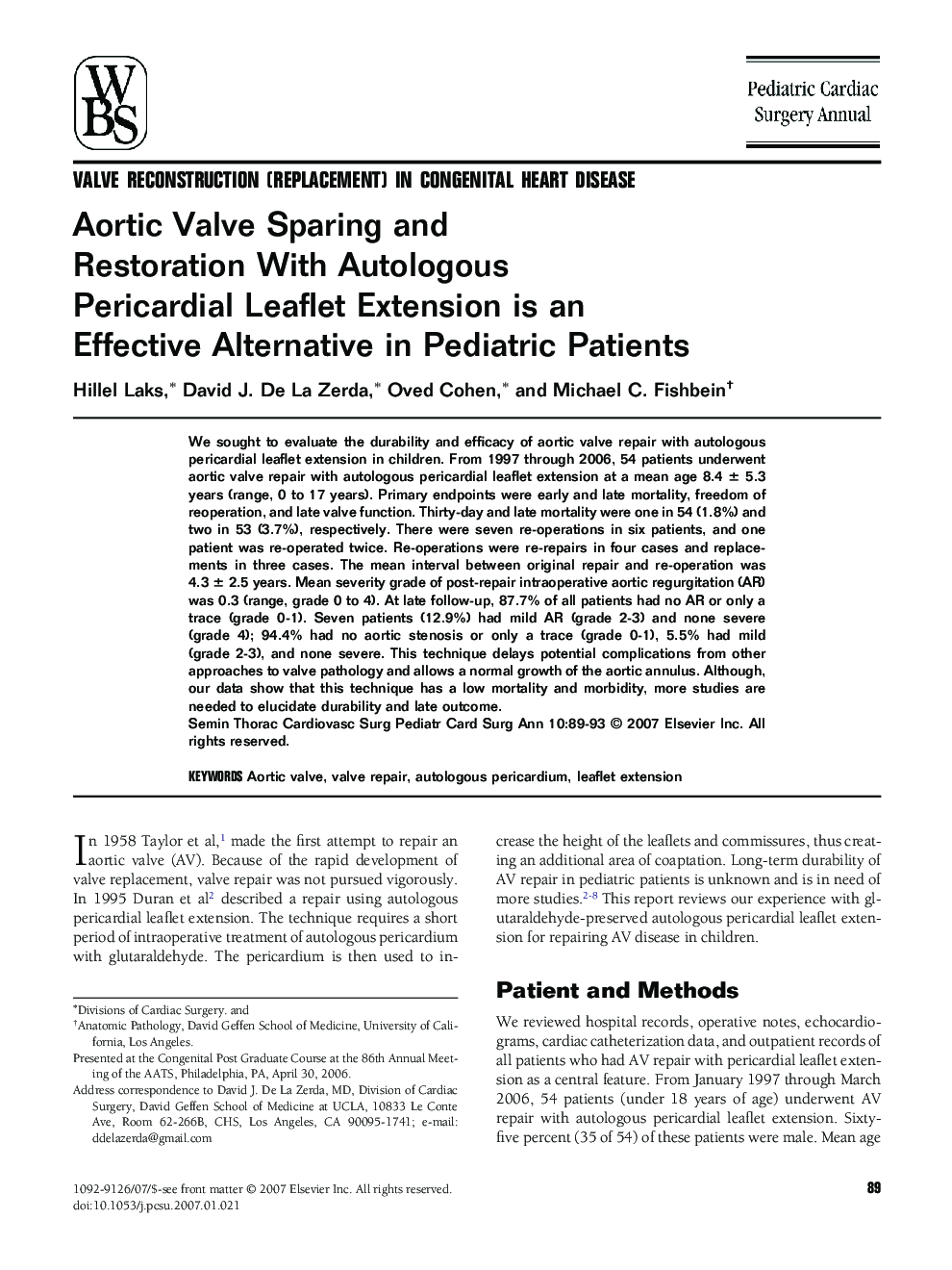| Article ID | Journal | Published Year | Pages | File Type |
|---|---|---|---|---|
| 3026012 | Seminars in Thoracic and Cardiovascular Surgery: Pediatric Cardiac Surgery Annual | 2007 | 5 Pages |
Abstract
We sought to evaluate the durability and efficacy of aortic valve repair with autologous pericardial leaflet extension in children. From 1997 through 2006, 54 patients underwent aortic valve repair with autologous pericardial leaflet extension at a mean age 8.4 ± 5.3 years (range, 0 to 17 years). Primary endpoints were early and late mortality, freedom of reoperation, and late valve function. Thirty-day and late mortality were one in 54 (1.8%) and two in 53 (3.7%), respectively. There were seven re-operations in six patients, and one patient was re-operated twice. Re-operations were re-repairs in four cases and replacements in three cases. The mean interval between original repair and re-operation was 4.3 ± 2.5 years. Mean severity grade of post-repair intraoperative aortic regurgitation (AR) was 0.3 (range, grade 0 to 4). At late follow-up, 87.7% of all patients had no AR or only a trace (grade 0-1). Seven patients (12.9%) had mild AR (grade 2-3) and none severe (grade 4); 94.4% had no aortic stenosis or only a trace (grade 0-1), 5.5% had mild (grade 2-3), and none severe. This technique delays potential complications from other approaches to valve pathology and allows a normal growth of the aortic annulus. Although, our data show that this technique has a low mortality and morbidity, more studies are needed to elucidate durability and late outcome.
Related Topics
Health Sciences
Medicine and Dentistry
Cardiology and Cardiovascular Medicine
Authors
Hillel Laks, David J. De La Zerda, Oved Cohen, Michael C. Fishbein,
